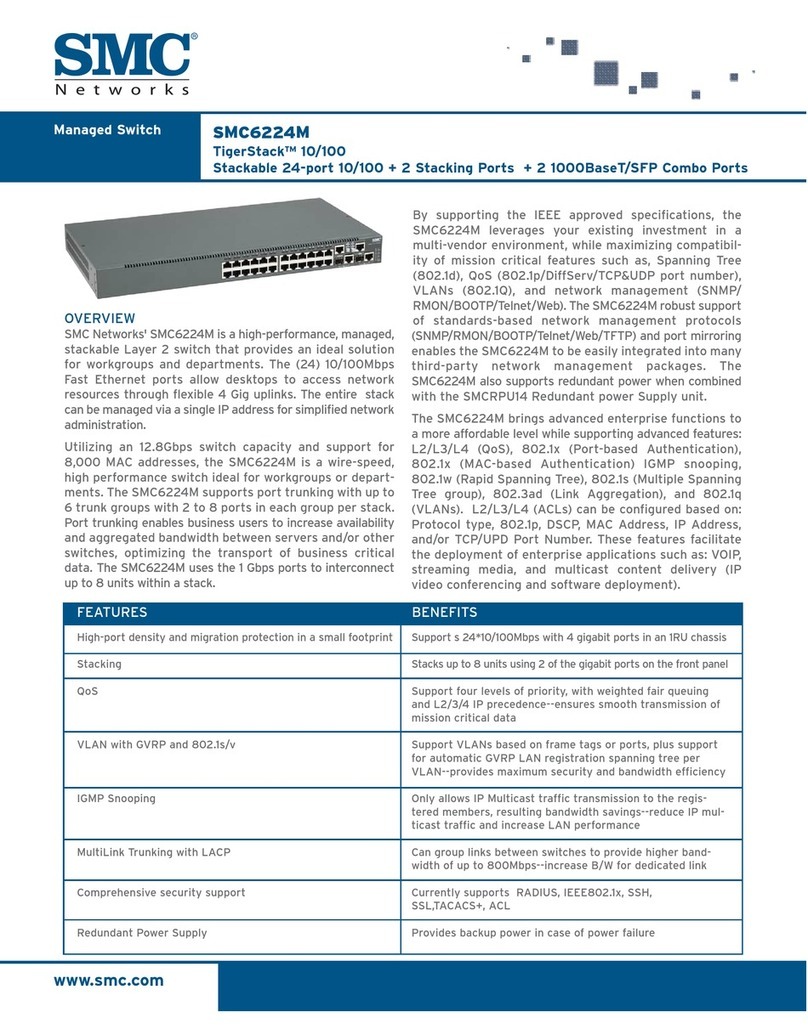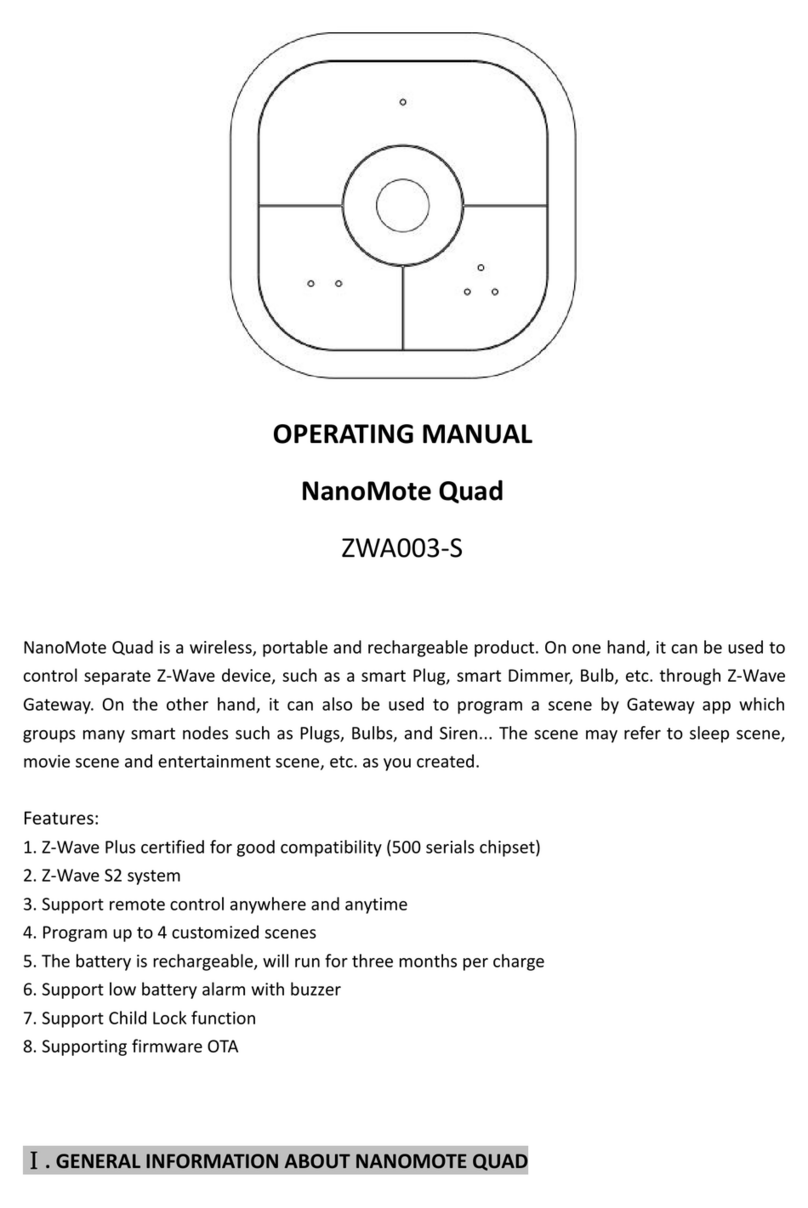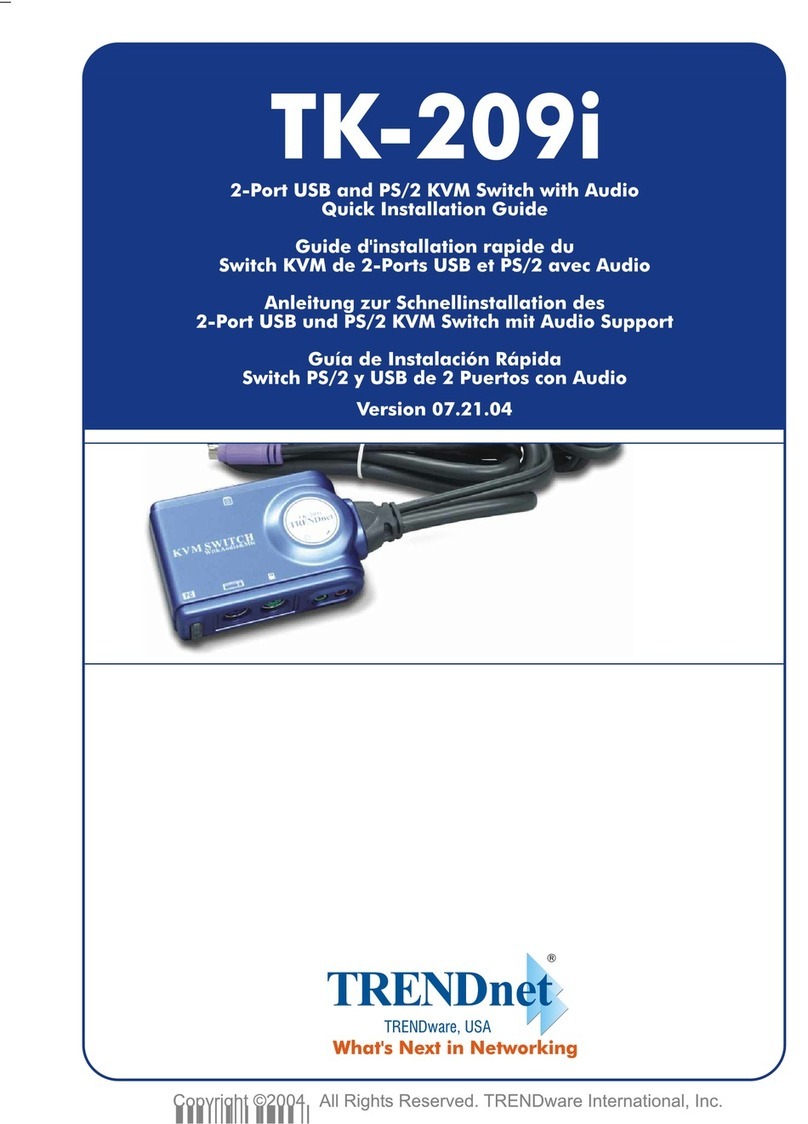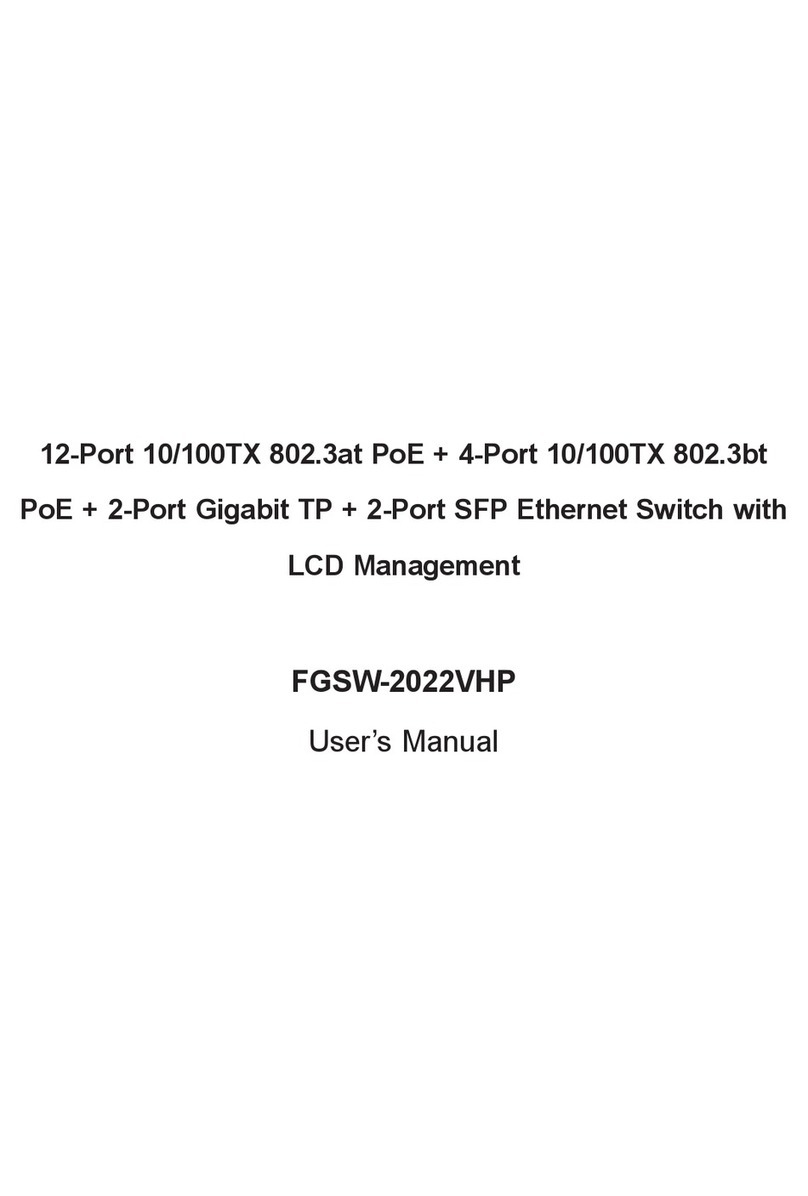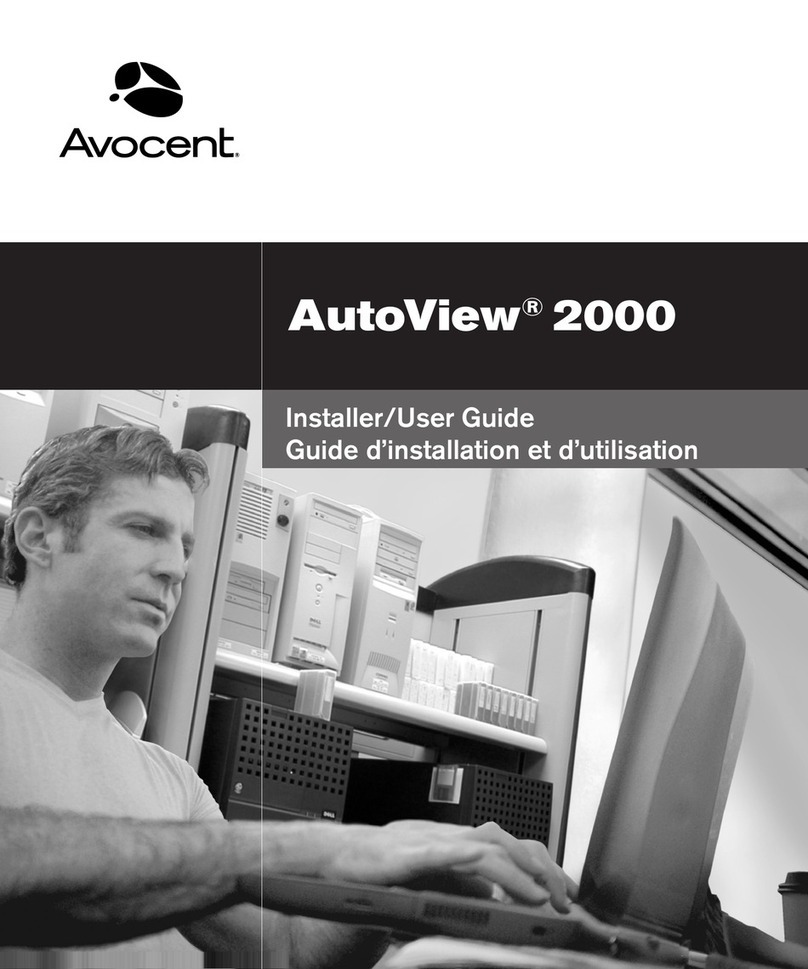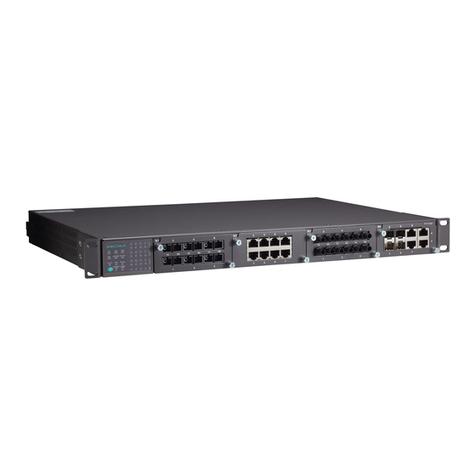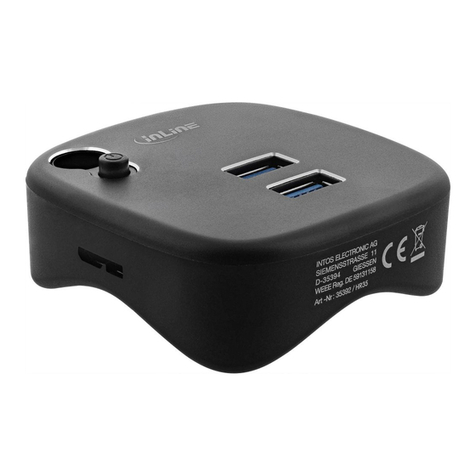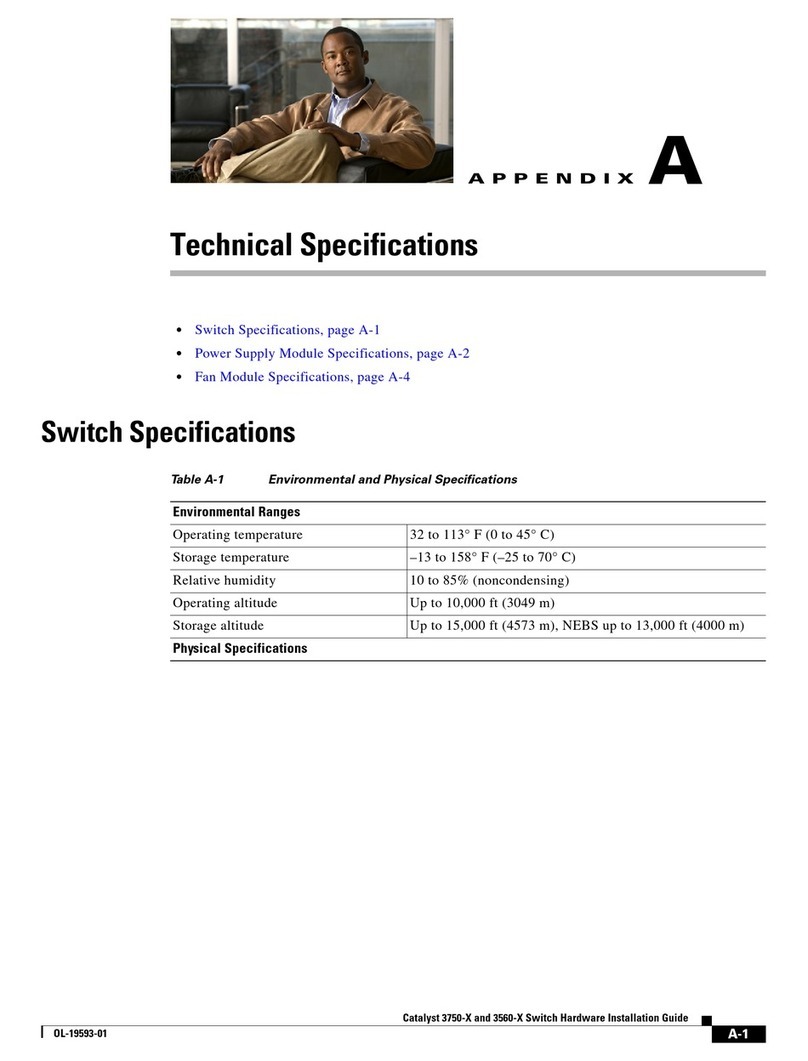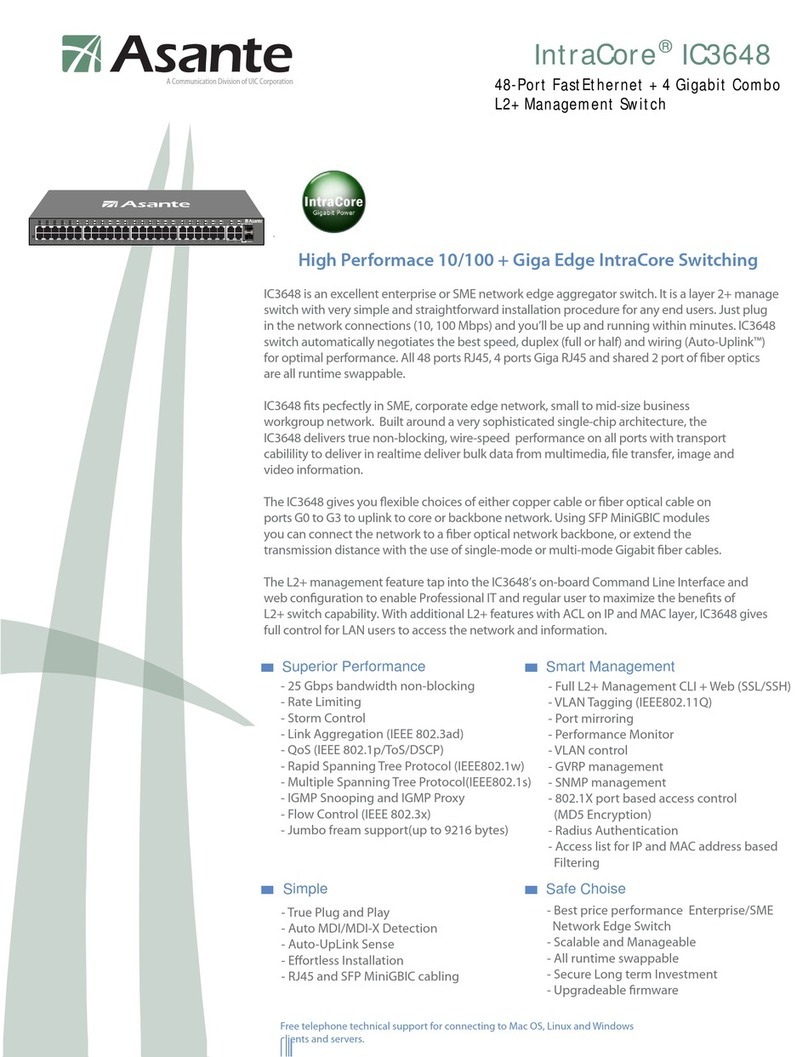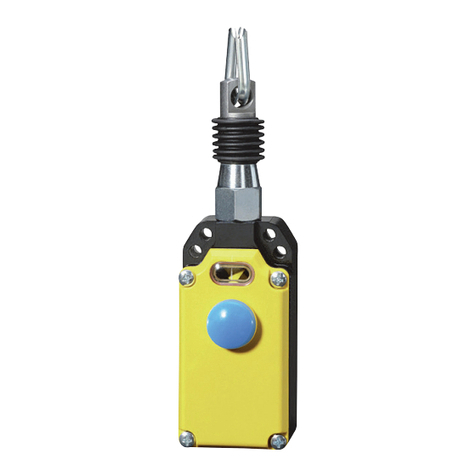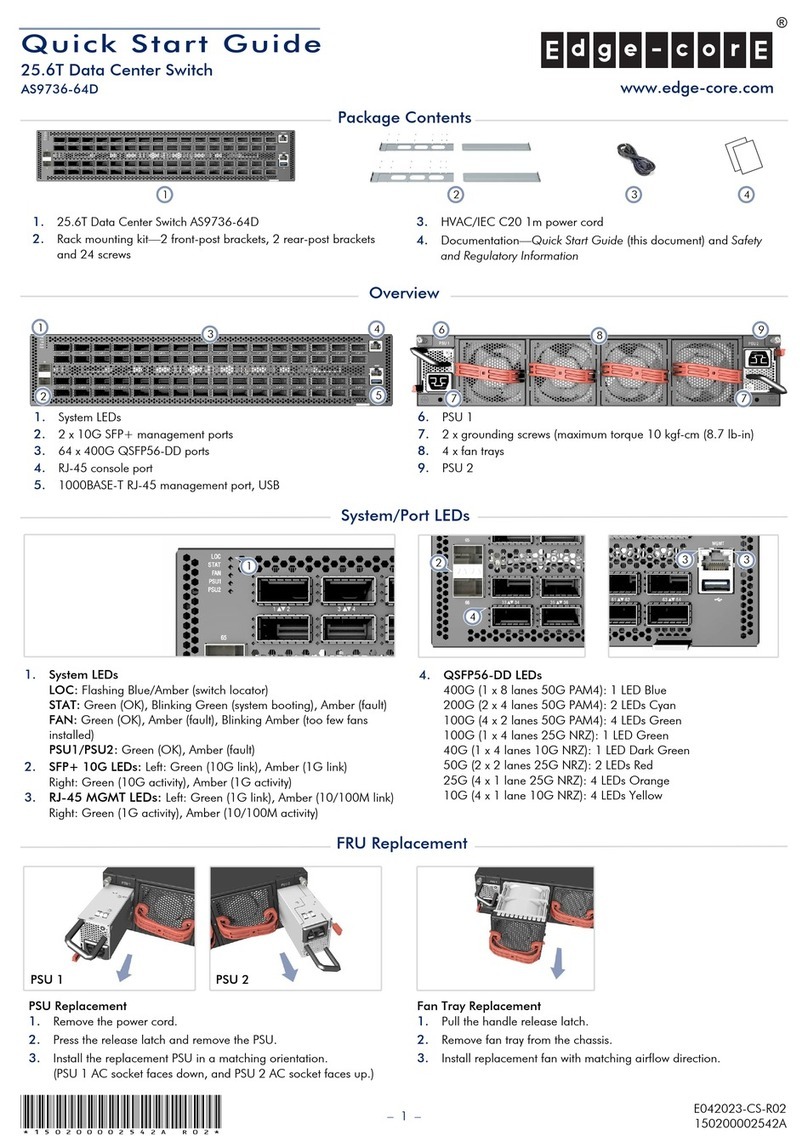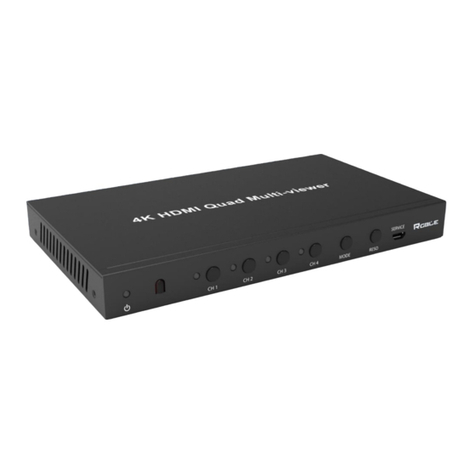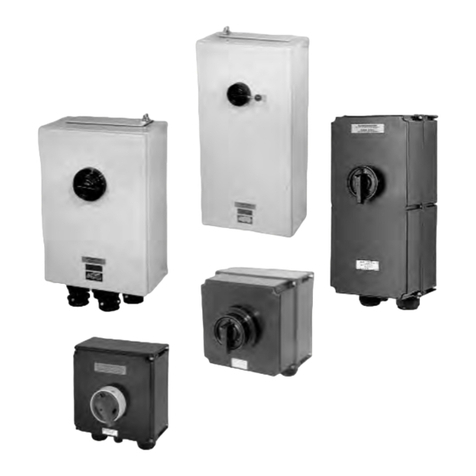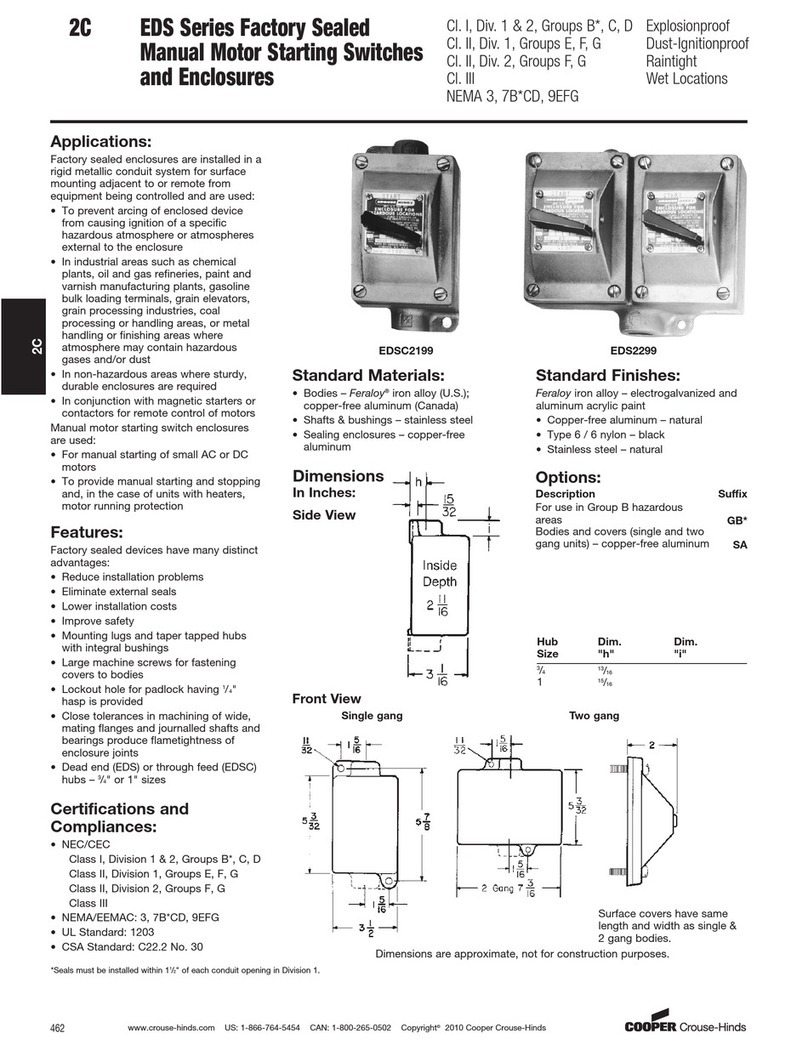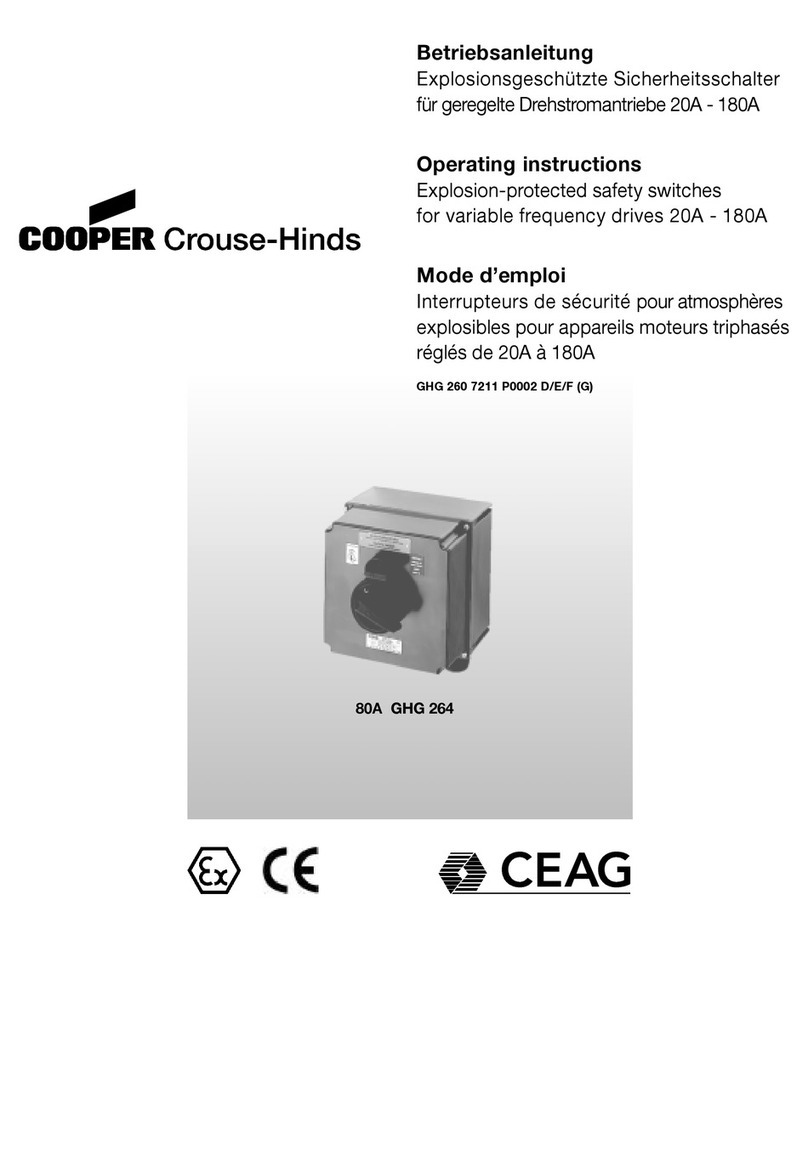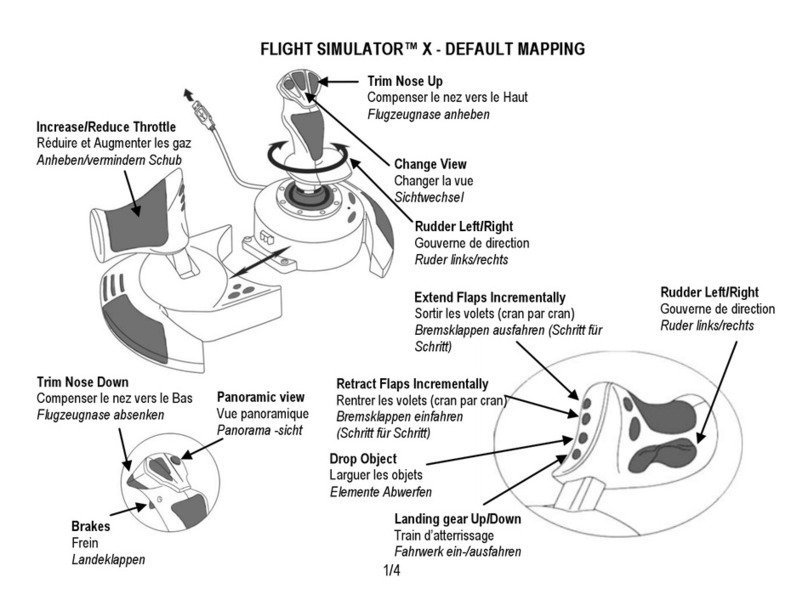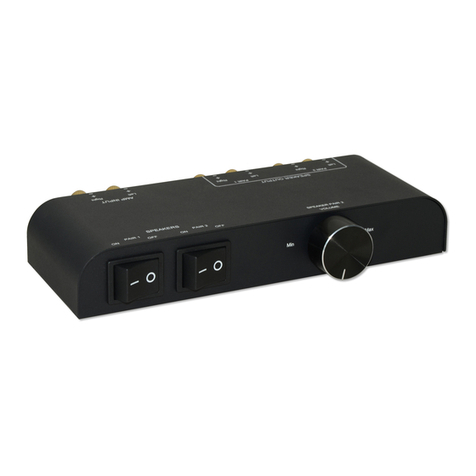
Cooper Crouse-Hinds GmbH 55
55
5
Bild 3
Explosionsgeschützte Installationsschalter,
Typ GHG 273
6.3 Kabel-und Leitungs-
einführungen (KLE);
Verschlussstopfen
Es dürfen generell nur bescheinigte KLE´s
und Verschlussstopfen verwendet werden.
Für bewegliche Leitungen sind Trompeten-
verschraubungen oder andere geeignete
Einführungen mit zusätzlicher Zugentlastung
zu verwenden.
Beim Einsatz von KLE mit einer niedrigeren als
der für das Gerät zutreffenden IP-Schutzart,
(siehe Seite 3, technische Daten) wird die IP-
Schutzart des gesamten Gerätes reduziert.
Die für die eingesetzten KLE maßgebenden
Montagerichtlinien sind zu beachten.
Um die Mindestschutzart herzustellen, sind
nicht benutzte Einführungsöffnungen mit
einem bescheinigten Verschlussstopfen zu
verschließen. Es ist darauf zu achten, dass bei
der Installation der KLE die für den Leitungs-
durchmesser geeigneten Dichtungseinsätze
verwendet werden.
Bei ausschneidbaren Dichtungseinsätzen ist
sicherzustellen, dass der Einsatz ordnungs-
gemäß dem Leitungsdurchmesser angepasst
wird.
Zur Sicherstellung der erforderlichen Mindest-
schutzart sind die KLE fest anzuziehen.
Bei übermäßigem Anziehen kann die
Schutzart beeinträchtigt werden.
Alle nicht benutzten metrischen CEAG KLE
sind mit dem bescheinigten CEAG-Verschluss
für metrische KLE zu verschließen.
Metallflansch für
Metalleinführungen
PE Anschluss-
leitung
Gehäuseunterteil
6.5 Schließen des Gerätes
Der Gehäusedeckel ist so aufzusetzen, dass
der Schutzkragen oben ist.
Alle Fremdkörper sind aus dem Gerät zu
entfernen.
Zur Sicherstellung der erforderlichen Mindest-
schutzart sind die Deckelschrauben fest
anzuziehen.
Bei übermäßigem Anziehen kann die
Schutzart beeinträchtigt werden.
6.6 Inbetriebnahme
Vor Inbetriebnahme des Betriebsmittels sind
die in den einzelnen nationalen Bestimmungen
genannten Prüfungen durchzuführen. Außer-
dem ist vor der Inbetriebnahme die korrekte
Funktion und Installation des Betriebsmittels
in Übereinstimmung mit dieser Betriebsanlei-
tung und anderen anwendbaren Bestimmun-
gen zu überprüfen.
Die Stößel des Schaltersöckel nicht zum
testen mit einem harten Gegenstand (z.B.
Schraubendreher) betätigen.
Unsachgemäße Installation und Betrieb
der Installationsschalter kann zum Verlust
der Garantie führen.
8 Reparatur / Instandsetzung /
Änderungen
Instandsetzungsarbeiten / Reparaturen dürfen
nur unter Verwendung von CEAG / CCH
Originalersatzteilen vorgenommen werden.
Bei Schäden an der druckfesten Kapselung ist
nur ein Austausch zulässig. Im Zweifelsfalle ist
das betroffene Betriebsmittel an CCH zur
Reparatur zurückzugeben.
Reparaturen, die den Explosionsschutz
betreffen, dürfen nur von CCH oder einer
qualifizierten Elektrofachkraft in Überein-
stimmung mit national geltenden Regeln
durchgeführt werden.
Umbauten oder Änderungen am Betriebs-
mittel sind nicht gestattet.
Ausgenommen ist das Anbringen von
zusätzlichen KLE im Rahmen der Zulassung
des Betriebsmittels.
9 Entsorgung /
Wiederverwertung
Bei der Entsorgung des Betriebsmittels sind
die jeweils geltenden nationalen Abfall-
beseitigungsvorschriften zu beachten.
Zur Erleichterung der Wiederverwertbarkeit
von Einzelteilen sind Kunststoffteile mit dem
Kennzeichen des verwendeten Kunststoffes
versehen.
Programmänderungen und
-ergänzungen sind vorbehalten.
6.4 Flansche und Metallplatten *
Müssen Metallflansche demontiert werden
(z.B. zum Bohren von Einführungsöffnungen),
ist bei der Montage zur Aufrechterhaltung der
Mindestschutzart auf den korrekten Sitz der
Flansche zu achten (siehe Bild 3).
Der Metallflansch ist so zu montieren, dass
die IP-Schutzart gewährleistet bleibt. Dabei ist
auf die Unversehrtheit der Dichtung zu achten.
Achtung: Metallflansche, Metallplatten und
Metallverschraubungen müssen in den
Potentialausgleich miteinbezogen werden.
Achtung: Beim Anziehen der Hutmutter der
Metall - KLE (z.B.Typ ADE; CMDEL) ist die
Verschraubung mit einem geeigneten
Werkzeug gegen Verdrehen zu sichern.
Von außen herangeführte PE-Leitungen sind auf
die dafür vorgesehene PE-Klemme am Flansch
anzuschließen. Der maximale Anschlussquer-
schnitt beträgt 6 mm²
* z.Zt. nicht bescheinigt für Kategorie II D
7 Instandhaltung / Wartung
Die für die Wartung / Instandhaltung von
elektrischen Betriebsmitteln in explosions-
gefährdeten Bereichen geltenden Bestim-
mungen wie IEC 60079-17 sind einzuhal-
ten.
Vor Öffnen des Gehäuses Spannungs-
freiheit sicherstellen bzw. geeignete
Schutzmaßnahmen ergreifen.
Die erforderlichen Wartungsintervalle sind
anwendungsspezifisch und daher in Abhän-
gigkeit von den Einsatzbedingungen vom
Betreiber festzulegen.
Im Rahmen der Wartung sind vor allem die
Teile, von denen die Zündschutzart abhängt, zu
prüfen (z.B. Unversehrtheit der druckfesten
Komponenten, des Gehäuses, der Dichtungen
und der Kabel- und Leitungseinführungen).
Sollte bei einer Wartung festgestellt werden,
dass Instandsetzungsarbeiten erforderlich
sind, ist Abschnitt 8 dieser Betriebsanleitung
zu beachten.
